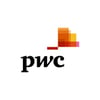PwC: US Average daily rate expected to drive RevPAR next year to 93% of 2019 levels
US Hospitality Directions: November 2021
The US lodging industry continued to benefit from an outsized improvement in leisure demand through the summer months. As kids headed back to school, individual business travel and group demand that historically replaces summer leisure business post Labor Day has yet to surface, with office re openings pushed later into 2021 or early 2022 as a result of the delta variant of the virus. That said, given the strength of demand during the summer, we expect annual occupancy for US hotels this year to remain consistent with our May 2021 outlook, increasing to 57.1 percent. The bigger story is the significant lift in average daily room rates during the back half of Q2 and Q3; exceeding 2019 (pre-pandemic) levels in each month of Q3. We now expect average daily room rates to increase 19.6 percent for the year, with resultant RevPAR up 55.1 percent, approximately 82 percent of pre-pandemic levels.
Trends and highlights
- With slowing growth in vaccinations (59% of the US population was fully vaccinated as of November 16, 2021) and waning consumer optimism as we head into the final month of this year, lodging’s recovery is expected to remain uneven.
- In 2022, as previously forecasted, we continue to expect the vast majority of temporarily-closed hotels will have reopened and demand growth (particularly from individual business travelers and groups) will improve if infection rates continue to drop. Continued growth in both occupancy and ADR is expected, with a year-over-year rebound in RevPAR of 14.4%, approximately 93% of pre-pandemic levels. ADR in Q3 and Q4 2022 is expected to surpass comparable 2019 levels.
- Despite hotel owners continuing to staff up with increasing demand levels, October unemployment for the hotel sector increased to 12.9% (from 11.0% in September), compared to the US overall rate decreasing to 4.6% (from 4.8% the prior month).
The US lodging industry continued to benefit from an outsized improvement in leisure demand through the summer months. As kids headed back to school, individual business travel and group demand that historically replaces summer leisure business post Labor Day has yet to surface, with office reopenings pushed later into 2021 or early 2022 as a result of the delta variant of the virus. That said, given the strength of demand during the summer, we expect annual occupancy for US hotels this year to remain consistent with our May 2021 outlook, increasing to 57.1 percent. The bigger story is the significant lift in average daily room rates during the back half of Q2 and Q3; exceeding 2019 (pre-pandemic) levels in each month of Q3. We now expect average daily room rates to increase 19.6 percent for the year, with resultant RevPAR up 55.1 percent - - approximately 82 percent of pre-pandemic levels.
With slowing growth in vaccinations (59 percent of the US population was fully vaccinated as of November 16, 2021) and waning consumer optimism as we head into the final month of this year, lodging’s recovery is expected to remain uneven. With leisure’s outsized importance in this recovery to date, destinations reliant on leisure demand are expected to continue to see stronger performance even as the temperature drops. With back-to-office plans only slowly starting to accelerate, markets reliant on individual business travel and group demand will likely have a softer Q4 this year than pre-pandemic.
In 2022, as previously forecasted, we continue to expect the vast majority of temporarily-closed hotels will have reopened and demand growth (particularly from individual business travelers and groups) will improve if infection rates continue to drop. Continued growth in both occupancy and ADR is expected, with a year-over-year rebound in RevPAR of 14.4 percent - - approximately 93 percent of pre-pandemic levels. ADR in Q3 and Q4 2022 is expected to surpass c.omparable 2019 levels.
Challenges to this outlook include the effectiveness of a campaign to increase the number of people getting vaccinated; severity of virus mutations and corresponding vaccination efficacy; and Congress reaching a more permanent solution to the country’s debt ceiling in early December.
About PwC US
PwC US helps organizations and individuals create the value they're looking for. We're a member of the PwC network of firms in 157 countries with more than 195,000 people. We're committed to delivering quality in assurance, tax and advisory services. Tell us what matters to you and find out more by visiting us at www.pwc.com/US. PwC refers to the US member firm, and may sometimes refer to the PwC network. Each member firm is a separate legal entity. Please see www.pwc.com/structure for further details.
Laura Schooler
PwC US
+1-646-471-3229
PwC




